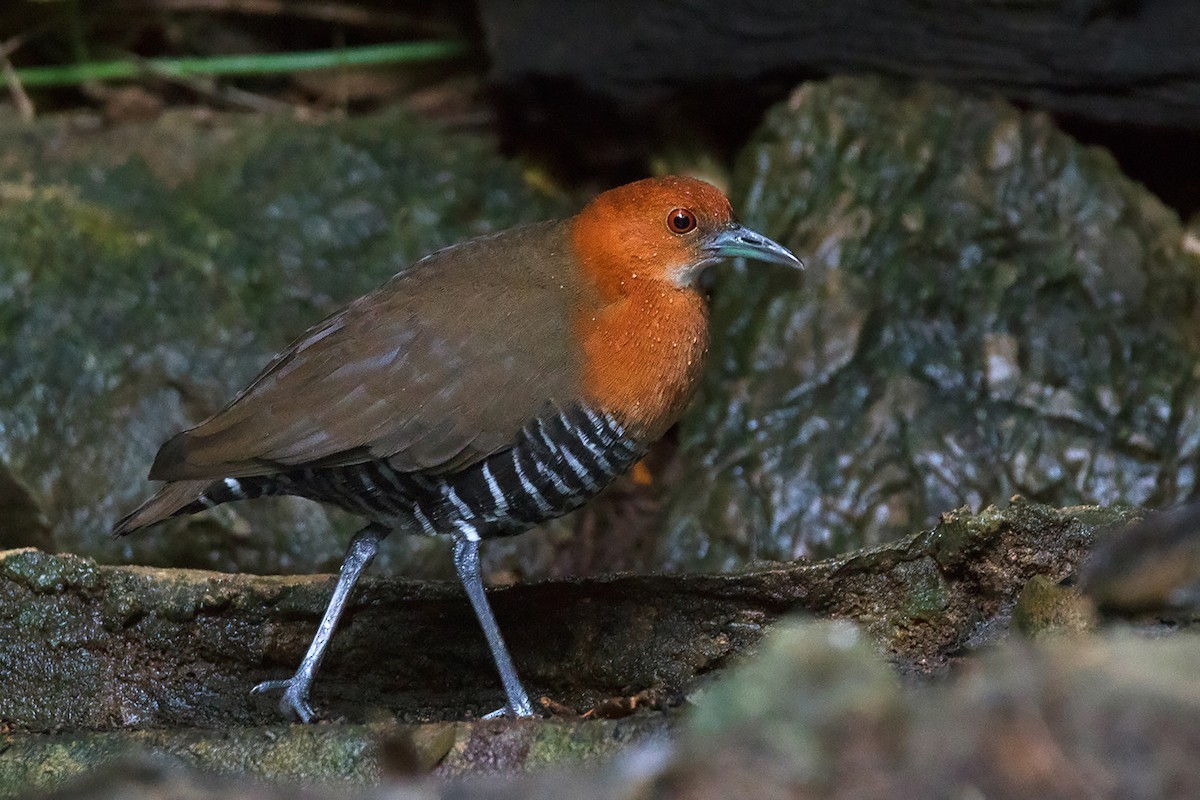Slaty-legged Crake
A species of Red-legged Crakes and Forest-rails Scientific name : Rallina eurizonoides Genus : Red-legged Crakes and Forest-rails
Slaty-legged Crake, A species of Red-legged Crakes and Forest-rails
Botanical name: Rallina eurizonoides
Genus: Red-legged Crakes and Forest-rails
Content
Description General Info
 Photo By Ayuwat Jearwattanakanok
Photo By Ayuwat Jearwattanakanok Description
The slaty-legged crake is about 25 cm long. Its body is flattened laterally to allow easier passage through the undergrowth. It has long toes and a short tail. Colouring includes a brown back, chestnut head and breast, and strong black-and-white barring on the flanks, belly and undertail. The throat is white, the bill is yellowish, and the legs are green. Sexes are similar; juveniles are dark brown above and below, although they have the belly barring and white throat. 
Size
25 cm
Nest Placement
Ground
Feeding Habits
Slaty-legged Crake primarily feeds on worms, molluscs, insects, and plant parts like shoots and seeds of marsh vegetation. They exhibit partly nocturnal feeding behaviors.
Habitat
The slaty-legged Crake is typically found in a range of forest environments, favoring well-wooded areas, dense scrublands, and thick underbrush, particularly along the peripheries of forests and near forest streams. This species thrives in areas rich in dense, original forest vegetation and is often encountered in agricultural fields such as rice paddies and taro fields, as well as in mangrove ecosystems.
Dite type
Omnivorous
General Info
Feeding Habits
Bird food type
Behavior
Slaty-legged crakes are territorial, but are quite secretive, hiding in bushes when disturbed. They probe with their bill in mud or shallow water, also picking up food by sight. They forage for berries and insects on the ground, or clambering through bushes and undergrowth. They nest in a dry location on the ground or low bush, laying 4–8 eggs. A study conducted in Nilambur, Kerala in southern India shows that the incubation period was about 20 days. 
Distribution Area
Its breeding habitat is swamps and similar wet areas in well-wooded country across south Asia east from India, Pakistan, and Sri Lanka to the Philippines and Indonesia. The rails are mainly permanent residents throughout their range, but some northern populations migrate further south in winter. 

 Photo By Ayuwat Jearwattanakanok
Photo By Ayuwat Jearwattanakanok